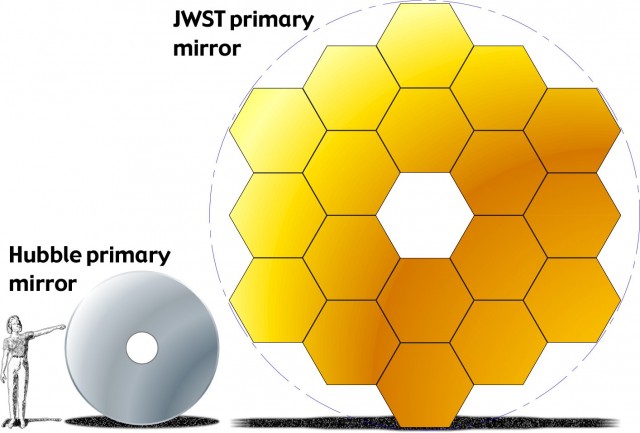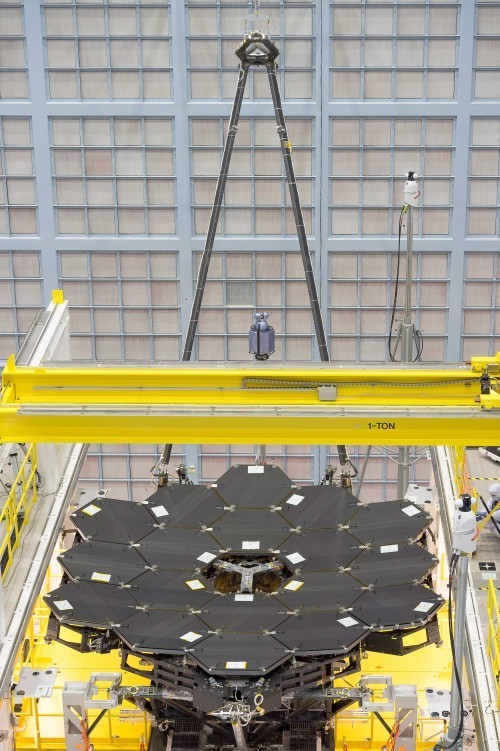The main mirrors of the telescope. James webb collected

It would seem that most recently, on November 25, 2015, NASA reported on the successful installation of the first of 18 mirrors on the James Webb space telescope. And on February 4, 2016, the last fragment is set . Now the mirror of "James Webb" is fully assembled. As is known, it is this orbital observatory — the largest in history — that is supposed to replace the Hubble Space Telescope.
Each hexagonal fragment has a diameter of slightly more than 1.3 m and weighs about 40 kg (a mirror of 20 kg). The segments joined together form a single 6.5-meter mirror of beryllium, covered with gold film (the mirror diameter is 2.7 times larger than that of the “Hubble”).

')
“James Webb” has a collecting area of 25 m 2 .

“Scientists and engineers have worked tirelessly to install these incredible, almost perfect mirrors that will focus light from previously hidden planetary atmospheres, star formation regions from the very beginning of the formation of the Universe. - Says John Gransfeld (John Grunsfeld), assistant administrator of the NASA mission in Washington. “When the mirror is finally finished, we are one step closer to the beginning of bold observations that will reveal the secrets of the universe.”
Each of the hexagonal mirrors was carefully installed in its place with the help of a robotic arm.
In addition to the reflective coating, motors and spacers are installed on the mirror, correcting the curvature of the surface. For accurate focusing fasteners main mirror can not be displaced by more than 38 nanometers. Now after installing other optics and elements, thorough tests will begin to check the telescope.
"James Webb" will be sent into orbit in October 2018. It will be located at the L2 point L2 of the Sun-Earth system.
The work of the engineers is monitored by two webcams available at www.jwst.nasa.gov/webcam.html .
Source: https://habr.com/ru/post/390173/
All Articles